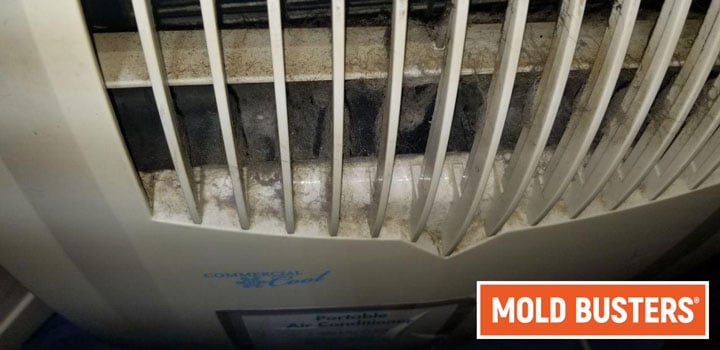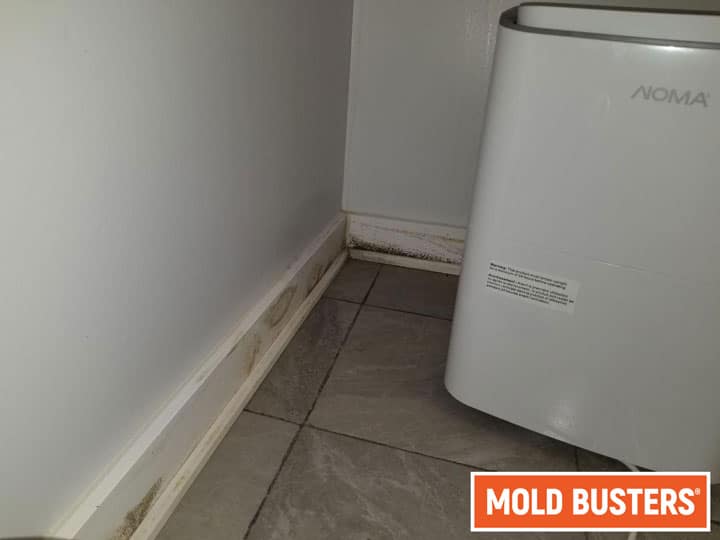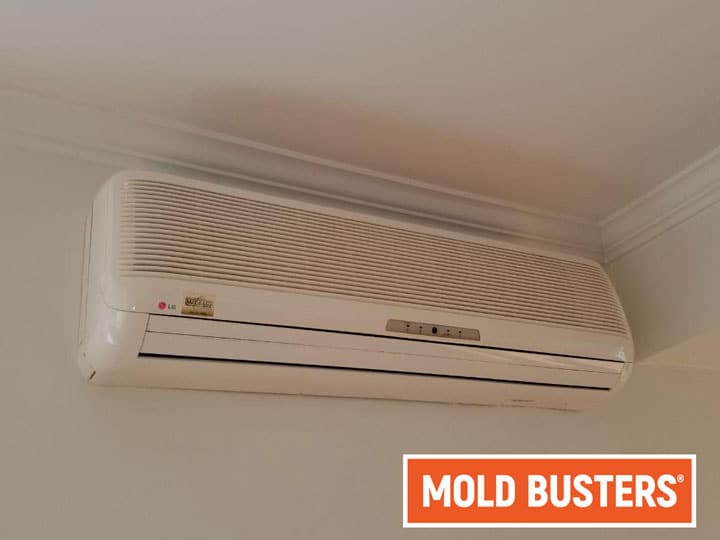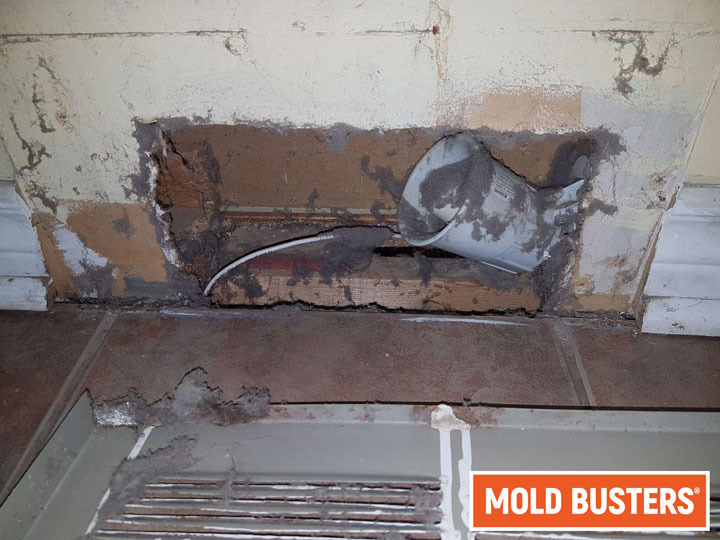Mold in Air Conditioners
Mold can grow in many areas in your home, particularly where it is dark and humid. So it should come as no surprise that air conditioners are one of the places where mold can be found. Unfortunately, AC units represent a particularly risky place for mold to grow, since they push air through the house.
This means that a moldy air conditioner will actually blow microscopic mold spores into the air you breathe, spreading the spores throughout the rest of your home. Since mold presents multiple health risks, it’s important to prevent mold from developing in your air conditioner, and to eradicate it if it does appear.
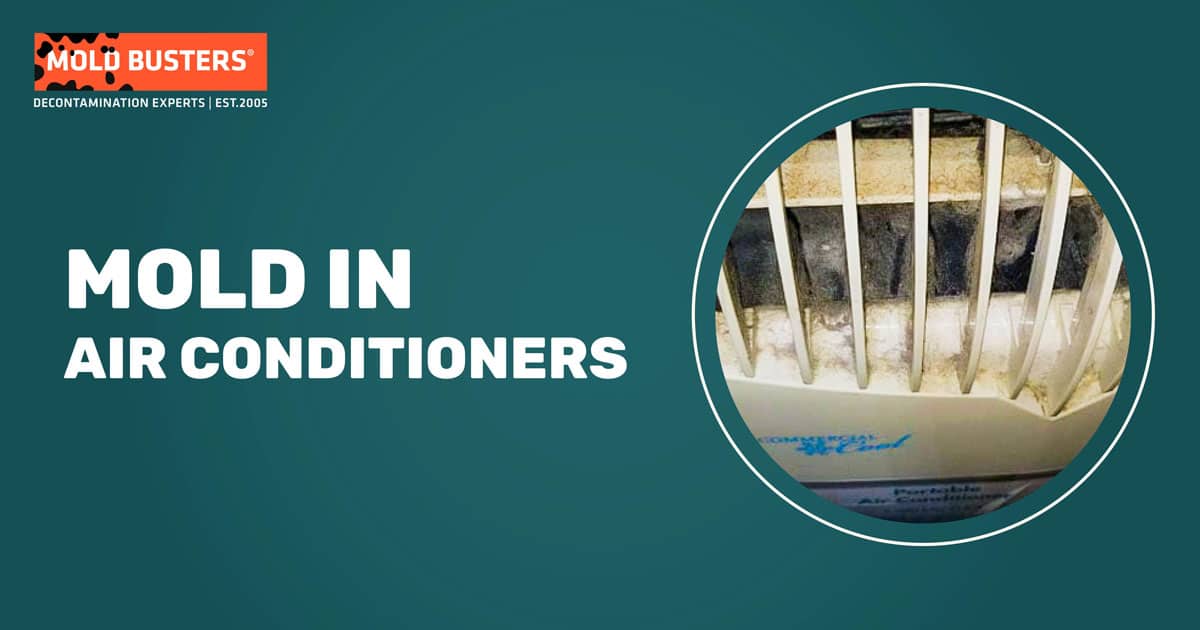
What are sings of mold in air conditioners?
There are a few signs to watch for if you suspect mold in your air conditioner:
- Musty smell. Mold spores give off a distinct musty smell. If you have a central AC unit, you might notice a musty smell throughout the house with no discernable source or visible signs of mold. If you have one or more window air conditioners, you might notice this smell in the room where the unit is located. A musty smell coming from an air vent when the AC is running is a clear sign of mold in your air conditioner.
- Health symptoms when AC goes on. Mold can cause a variety of negative reactions, including allergic reactions and various respiratory problems. If you or someone in your family starts showing these symptoms only when the AC is running, mold may be the culprit.
- Visible signs. Of course, depending on the location of your AC unit, you may be able to give it a visual inspection, along with the air vents if you have central air conditioning. Look for the familiar patchy spots of mold, sometimes fuzzy and often black or green-black. But keep in mind that mold spores are microscopic and the source of them may be hidden from view. So even if you can’t see any mold, it may still be lurking out of sight.
- Professional inspection. If you suspect mold in your air conditioner, the best way to be certain is to bring in a professional mold inspector. They will be able to determine if there is mold in your AC unit, in the ventilation system, and other parts of your home.
Causes of mold growth in ACs
Mold is a type of fungus. Like all living organisms, fungi require three things to grow: oxygen, water and organic matter. Since air conditioners circulate air and the cooling coils tend to create condensation, the first two criteria for mold growth are bound to be present in an air conditioner.
Air conditioners and ductwork also provide the dark spaces where mold can thrive. Add some organic material—which can simply be dust and other debris—and you have all the conditions for mold to grow.
At Mold Busters, we offer professional inspection services in various locations including Montreal and Ottawa. We also provide a convenient virtual inspection service for initial assessment.
What are types of ACs prone to mold growth?
Your house may be cooled by one of various types of air conditioners:
- Window AC units
- Freestanding, portable AC units
- Wall-mounted stand-alone units
- Central air conditioners
Any air conditioner may develop mold, but each has slightly different considerations for mold detection and eradication.
- Mold in window AC units. AC units fitted to a window can often be fairly easily inspected and removed. Depending on your level of skill and confidence, you might feel up to attending to mold in your window unit on your own—though care and safety equipment should always be used when handling household mold.
- Mold in free-standing AC units. Free-standing AC units are becoming increasingly popular. Like window-mounted units, they use a window opening to vent air and humidity. Since these units are often intended to be moved around easily, you may well feel able to handle and potentially dispose of a moldy unit without professional help. Still, use caution if you suspect mold in a free-standing unit.
- Mold in wall-mounted AC units. Some AC units are installed directly into a wall. Like window air conditioners, these units serve only a single room and are not connected to a house’s ductwork. This narrows the focus of inspection, cleaning or replacement. However, as permanently installed fixtures, they may be harder to deal with than free-standing or window-based AC units.
- Mold in central air conditioners. Central air conditioners represent a greater challenge if mold is suspected. They are typically much bigger pieces of equipment and might be installed at an inaccessible spot. An even bigger problem, though, is that they are attached to a ventilation system that is liable to also develop mold. Because central air systems are so much bigger and more complex than smaller units, replacement is rarely a viable option. For these units, professional care is the recommended way to remediate a mold infestation.
What type of mold grows in air conditioners?
There are thousands of types of mold. Of these, the most common types of mold found in air conditioners and ductwork include:
- Aspergillus: a genus of mold fungus prone to triggering allergic reactions and illness in people with weak immune systems.
- Cladosporium: a very common genus of mold with a green to black appearance, often relatively innocuous though it can still trigger allergic reactions and worsen asthma.
- Stachybotrys chartarum: known as black mold or toxic mold, Stachybotrys chartarum is a particularly dangerous species of mold that produces poisonous mycotoxins.
Black mold in AC
While many species of mold have in common a tendency to trigger allergic reactions and cause respiratory problems, black mold is a particular risk with AC units. Black mold produces mycotoxins that are poisonous to humans. Because AC units circulate air, they will blow black mold spores into the air you breathe and throughout the house. These spores can then take root in many parts of the house: inside walls, above ceilings, under carpets, etc. For these reasons, it is extremely important to detect and eradicate a black mold infestation as soon as possible.

Did you know?
Stachybotrys (black mold) is the 3rd common toxic mold type found in homes we tested?! Find out more exciting mold stats and facts inside our mold statistics page.
What should I do if I notice mold in air conditioner?
- Replace. In many cases, particularly for smaller, less expensive window and free-standing units, safe disposal and replacement may be the best option. If there is significant build-up of mold in an AC unit, it may cost less to replace it than to remove the mold from it. However, care should still be taken when handling the old unit: use goggles, face mask and gloves to avoid exposure to mold when inspecting or removing the old unit.
- Hire an expert. Of course, it’s a shame to throw out a functional air conditioner, and it can be both safer and more economical to hire an expert to deal with it. In the case of most central air conditioners, this will be the only viable solution to eradicate mold not only from the AC unit but from all associated vents and ductwork.
Built-in wall units might be tempting to tackle yourself, but remember: even with no ductwork, the fact that it’s built in means the mold will have to be dealt with on sight. You don’t want to transfer the mold in your wall unit to the rest of the house. Better to hire an expert than to put your home at risk. - Self-clean. If you have a small, removable unit not connected to a ventilation system, it may be possible to clean it yourself. If you are contemplating this, first inspect the unit using goggles, a mask and gloves to avoid contamination. Open and look inside the unit: Is the mold limited to less than a third of the unit? Does the unit’s design let you see into it enough to assess the presence or absence of mold? Is it limited to parts of the air conditioner you’ll be able to access and clean? If the answer is “no” to any of these questions, do not attempt to clean it yourself.
How to remove mold from air conditioner?
We don’t recommend that homeowners attempt to clean a central air unit or ventilation (unless they are an experienced mold technician). If, on an inspection of a small self-contained unit, you have decided to tackle it yourself, here’s what you’ll need to do:
- Wear goggles, a face mask and gloves to avoid exposure
- Move the unit to a space where you can clean it without cross-contaminating your house (e.g. driveway)
- Open the unit and remove the filter
- If the filter is disposable, throw it out
- If the filter is not disposable:
- remove all debris and visible mold
- fully submerge the filter in a mix of 1 part bleach to 10 parts water (100ml per L, or one cup per gallon)
- let soak for at least 10 minutes
- rinse
- air dry
- Use a wet/dry vac to remove all debris from the interior of the unit
- Deep clean all affected surfaces using a mixture of 1 parts bleach to 10 parts water, adding a spoonful of detergent for extra penetration.
- Allow at least 10 minutes for the bleach to kill off any last remnants of mold
- Hose or otherwise rinse off the unit, but avoid soaking the electrical components
- Allow to dry
- Reinstall the filter, reassemble and reinstall
If you’re intimidated by the above work, remember: hiring a mold removal expert is always a safe and sure-fire way of getting mold eradicated.
How to prevent mold in air conditioner?
Fortunately, there are a few steps you can take to prevent mold from developing in your air conditioner:
- Reduce moisture. The easiest way to avoid moisture build-up in an AC unit is back when you purchase it. Look for an AC unit with humidity control. Many modern units vent water vapour with air. If you have a unit that is designed to collect water in a reservoir, empty it regularly.
- Avoid organic debris. In addition to water and air, mold needs organic matter to breed. Clean or replace your air conditioner’s filter regularly, and vacuum the interior to clear out any dust and debris. Don’t give mold any food to live on!
- Keep unit running while on vacation. Mold tends to build up when the air conditioner is not running and the air is still. Keep your unit running, even when on vacation. To reduce energy consumption, you can set the target temperature higher so it runs less often, but don’t shut it off altogether.
Unfortunately, air conditioners represent a particular problem area for mold, since they push the air and mold spores through the house and into the air you breathe. The risk of black mold in particular makes it important to be vigilant about mold in air conditioners and nip problems in the bud.
It may feel intimidating, but don’t feel discouraged. Knowledge is power, and knowing to keep an eye out for mold in your air conditioner will help you keep your home healthy and happy.

Get Special Gift: Industry-Standard Mold Removal Guidelines
Download the industry-standard guidelines that Mold Busters use in their own mold removal services, including news, tips and special offers:
Published: May 15, 2020 Updated: August 3, 2023

Written by:
John Ward
Account Executive
Mold Busters
Fact checked by:
Michael Golubev
CEO
Mold Busters

